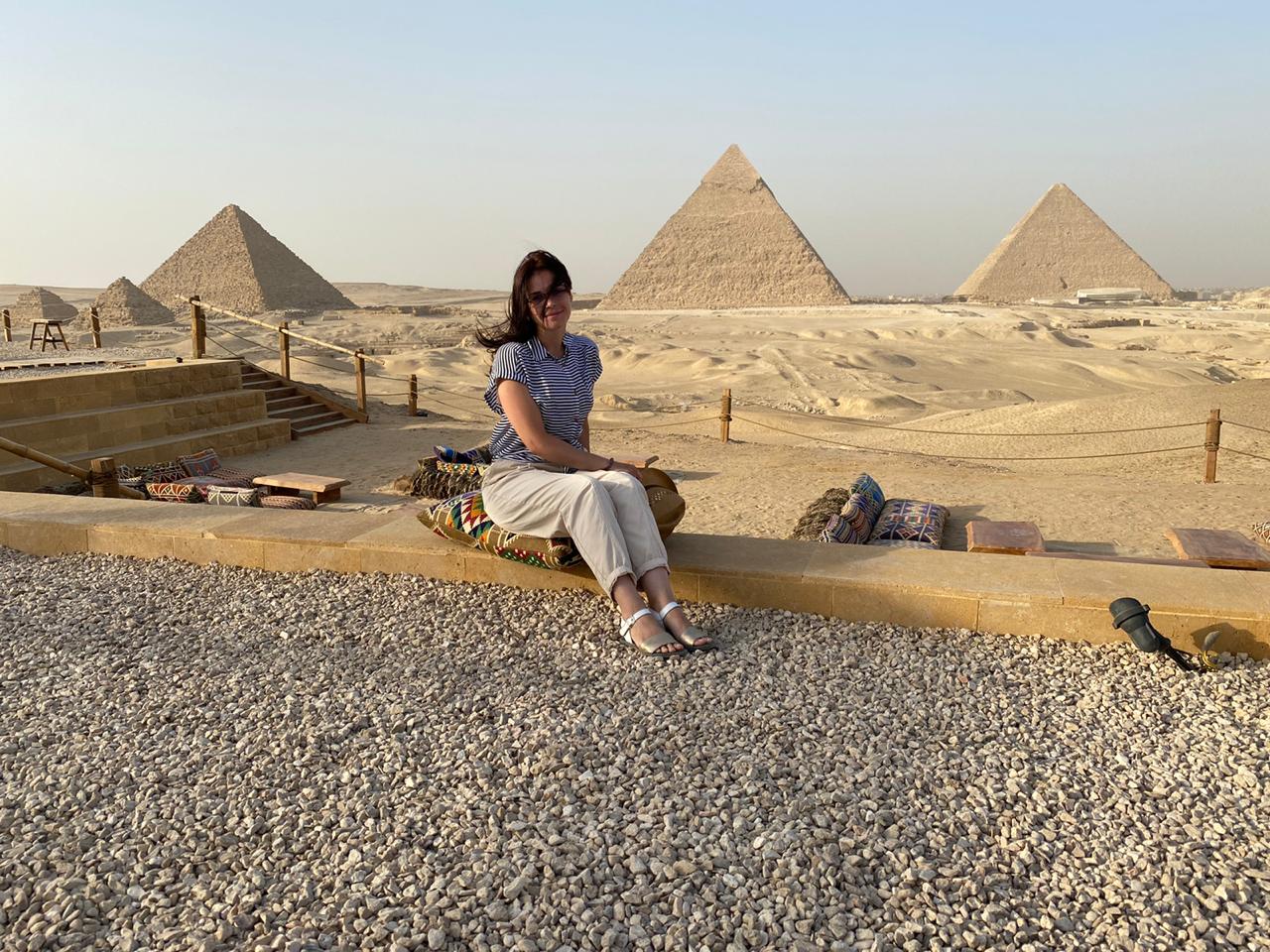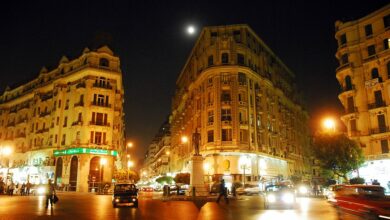The photographic archive of Fatima Hanem Chahin is a treasure trove that includes thousands of pictures she took throughout the twentieth century. Perhaps the most prominent is her collection on the 1919 revolution, which she shot while riding with her teenage brother Loulou on his motorbike around Cairo’s Downtown squares. Married to Egyptian diplomat Mahmoud Sabit Bey and pregnant with their son Adel, Chahin asked Loulou to escort her to the protests against the Brits, which she joined and documented, using what is believed to have been a Brownie box camera.
A pregnant woman photographing the revolution from the back of a bike was an uncommon sight — and perhaps still is — but Chahin and many other women, including Egyptian feminist Huda Sharawi, were very politically engaged during those transformative times in Egyptian history.
Chahin was born in 1899 into an aristocratic family with roots in both Hijaz and Kurdistan. Her family settled in Egypt in the eighteenth century and held key positions in government. Chahin’s grandson, the historian Mahmoud Adel Sabit, described Chahin’s generation to Al-Masry Al-Youm as “the last generation born into viceregal Egypt.”
“The world was very different at that time. It was based on cultural and civilizational identity rather than ethnicities,” Sabit said. Egypt remained part of the Ottoman Caliphate until 1914, when it was annexed by the British after the Ottoman Empire joined the Central Forces in WWI. “Nationalism as we know it was in its infancy in the region,” he explained, citing how Chahin supported the Ottomans in the battle of Gallipoli against the Allies in 1915.
At the end of WWI, feelings of nationalism and the dream of an independent Egyptian nation-state proliferated. It was Britain’s refusal of Egyptian leader Saad Zaghloul’s request to negotiate Egypt’s right to self-determination at the 1919 Paris Peace Conference, and Zaghloul’s subsequent exile, that spurred the street protests in March 1919.
Pressured by mass protests in Egyptian governorates, which women joined for the first time, the British released Zaghloul and his companions. Chahin was among the Egyptians welcoming him upon his return from exile in Malta.
“To label her an activist would be an overstatement,” explained Sabit. But by his own account, Chahin was socially and politically engaged by virtue of her educational, social and family background.
Chahin and her two brothers grew up in a household of over 200 members that included distant relatives, governesses and domestic servants. It was a highly traditional house with Salamlek (halls for receiving guests) and Haramlek (women’s living areas). Unlike her brothers, who went to school, Shahin was tutored in languages, humanities, art and music by her British and French governesses.
One governess, Sabit recounts, had a camera, and it was after her that Chahin picked up photography as a hobby. She began taking photos of her girlfriends in various poses. “They even dressed up in costume,” Sabit told al-Masry al-Youm, citing images of the girls in harem costumes holding long tubuk pipes. Chahin’s archive includes around 300 photographs taken before her marriage.
After her marriage, Chahin had greater freedom to leave the house. She began taking informal pictures of family members and friends. Many of the images in her archive are of the Egyptian royal family. Chahin visited her cousin Queen Nazly — also a passionate photographer — regularly at al-Kobba palace, where the two women experimented with their cameras. She focused less on Cairo’s urban landscape in the early twentieth century, but one image from her archive shows two Egyptian constables patrolling a horse carriage in Garden City.
In the 1920s, Chahin’s husband served as the Egyptian ambassador in London and then Prague. Abroad, she continued with her hobby, documenting family gatherings as well as land and cityscapes. Upon the family’s return to Cairo, her husband was appointed Chief of Protocol at the Egyptian Ministry of Foreign Affairs. Her son Adel Sabit was the publisher and editor of The Egyptian Economic and Political Review under the Nasserite regime before being accused of plotting against the regime, imprisoned and forced to live in exile until 1980. He wrote several books chronicling and analyzing major events he witnessed in Egyptian history until he passed away in 2001.
In the family house, Sabit continues to excavate the family archives of photographs, documents and letters of correspondence. Through their careful examination and contextualization, great insights can be distilled about the social, cultural and political life of Egypt in the nineteenth and first half of the twentieth century, thanks largely to his grandmother’s not-so amateur photography.




